|
|
 |
We hope all had a wonderful Thanksgiving . We have been very busy with so many SOM activities! Please get your 2015 Jean Luc Cornille clinics dates set up early. New information on the clinic program click HERE To send a horse to SOM for training learn more HERE
Our IHTC group has grown to over 100 members. IHTC is online as well as available through mail on DVD's. We will be increasing the online version price on Jan 1st 2015. If you have been thinking of joining now is the time. We also have stand alone courses to purchase one at a time. Our private Facebook group for full members is active daily with Jean Luc answering questions each day. It is like a lesson a day with our JLC. Wonderful support group. A few testimonials below: I kept noticing how there is such a huge disconnect between the "ideals" talked about by riders and trainers and the results that I saw in their horses. More often than not, horses and riders would not progress beyond 1st level and when they did, the riding did not look graceful or easy. The ideals were not evident in what I was seeing. My own journey in trying to apply those ideals to my own riding was just as stuck. I felt like I was always chasing my tail. When I became aware of SOM I was blown away. Suddenly, the explanation for what I was seeing and experiencing was very clear. It is a paradigm shift. It is not a new spin on an old phrase it is a whole new phrase! Ronda Hanning
I was also looking for a way to help my horse. He has had a long history of lameness which I firmly believe had their origins in his early training. I felt that there were problems in his back but no one could ever really tell me. Then we found he has cervical arthritis and I was told that long and low was the way to go. It was not and my horse's stifles went out. The thing was that no vet or training system I knew could put together why my poor horse was falling apart. I read about SOM on a post on the massage board of CoTh. So I went to the SOM website and started reading about horses with similar lameness issues being successfully rehabbed with this approach. The more I read, the more it made sense to me. For the first time the whole horse was being taken into account and I could see clearly the genesis of my horse's lamenesses.
I'm slow making progress because of my own lameness issues (arthritic hip), but I have only found a wealth of support here. I hope I can make a difference for my horse, but even if I can't bring him back to soundness, I can never look at things the same way. I am in this for a long term change.Sara Tardanico
I was trying to learn biomechanics from a particular not very tactful PhD on the internet. A lame horse, whom I did not want to inject, sent me on this search. I applied what I learned from her and he got worse - dead lame. I still didn't want to give up and soon found SOM. He is better than when I started with the particular PhD who pleasure rides and believes that is enough experience to apply the science. It is impossible to put this stuff to practice without the extensive experience that JLC has: successfully training and competing horses for the most athletic sports at international level and success in rehabilitation. It's a no-brainer for me, but I messed up a horse pretty bad using someone else's pathomechanics. I knew there was a "right answer" and I found it! Lucky, aren't we! Paige LaBella
Read more testimonials
To learn more about IHTC click HERE
|
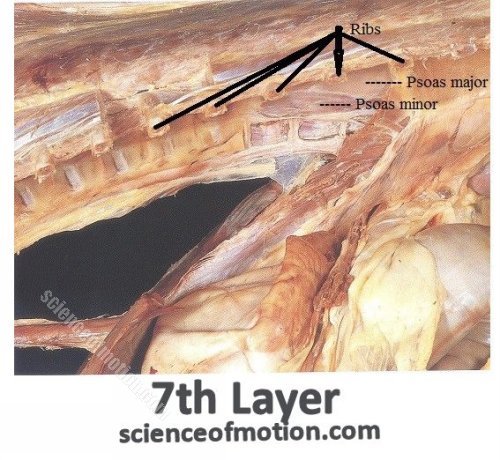
"We are being sold products and social scenarios that appeal to our fantasies but ultimately fail us." (Fred Ritchin),
He smiled reading the quote thinking, "This applies to the horse world. All these 'release' theories, including releasing the psoas, appeal to riders' fantasies but ultimately fail the horses." I cannot agree more with him. Releasing our muscle tone ultimately increases our muscle work in locomotion. Most of the musculotendinous length change that is part of our work during steady-speed locomotion, is not executed by our muscle fibers but instead, by elastic recoil of our associated tendons and muscle aponeurosis. The spring capacities of our tendons is particularly useful in cursorial locomotion as they facilitate the exchange of kinetic, potential and elastic strain energy, and reduce the amount of mechanical work that our muscles have to perform in order to move our legs. This is the fundamental principle of our locomotion.
|
 |
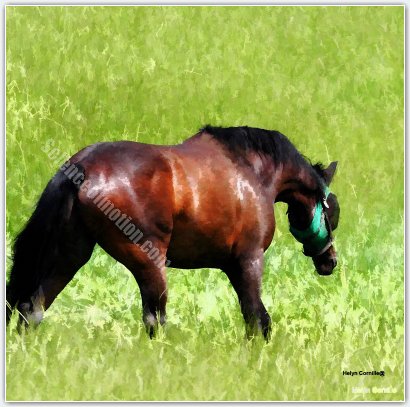
"A visually identical hind limb extension in late stance may be accomplished by only hip extensor muscles, only knee extensor muscles or any combination of these." (Liduin S. Meershoek and Anton J. van den Bogert. Mechanical Analysis of Locomotion.)
The phenomenon is not limited to stifle extension. Many apparently identical movements can be executed with different muscular combinations. This is why a horse can be crippled or rehabilitated by the same movement. If the training is limited to the exploitation of natural reflexes, the predictable outcome is lameness. Instead, if the education guides the horse's brain toward the muscular coordination optimally adapted to the athletic demand of the performance, the outcome is soundness. The outcome is also winning in the show ring as many superior athletes perform below their real potential due to a dysfunctional physique.
Supah is a 17.2 hand Thoroughbred gelding whose body bears the scars of a racing career. Bony proliferations and swellings are on all of his legs, especially around the front fetlocks, his front incisors are broken, his right jugular vein was occluded and there is an enormous bony protuberance on the top left side of the 9th to 10th thoracic dorsal spine at the level of the supraspinous ligament. We do not really know what caused it - trauma from a fall is a possibility, especially as he was so crippled from the track he was prone to stumble and did occasionally fall when trying to play at pasture. Whatever was the cause, it was associated with him carrying his trunk sunk between his forelegs, which severely handicapped the motion of his left foreleg. The front limb could barely move forward ahead of the vertical of the point of the shoulder. He could only turn by planting and turning around his forelegs, thus he could not run away or protect himself and was low in the herd social order. Mentally, he was not weak, but physically he could not stand his ground.
|
|
Special Thanksgiving Thoughts
|
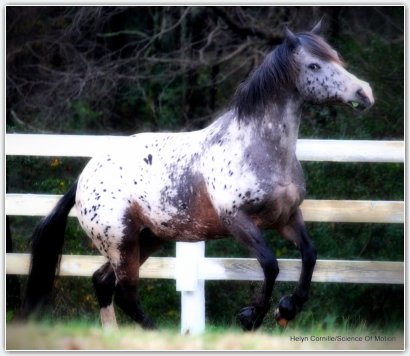 | | Diva |
"There is no limit to what can be accomplished when no one cares who gets the credit." John Wooden
This morning, November 27 2014. He entered the barn as he does every morning, He told us, "Happy thanksgiving." For us it was just a normal day, but he added a carrot on the top of our regular breakfast. As usual, he sat on the table reading his e-mails waiting for us to finish our breakfast. The next move will be leading us in our turn outs. He read one e-mail again and I can feel that he was deeply happy. I looked at him and he looked at me. "You remember Victoria and her mare Diva? He remembers Diva as very intelligent, courageous, hard worker and very gentle mare. I remember Diva as very cute. As a gelding I don't remember why I like looking at very cut mares,
but I do. He read for me what Victoria wrote. "My mare has horrific bilateral ring bone up front. She couldn't walk. She was miserable. Drove her 11 hours up to his farm and she stayed there for a while. She is home. Happy. Comfortable. Walking. Taking my 2 year old son for little rides weekly and they are happy as can be! " Click to read on
|
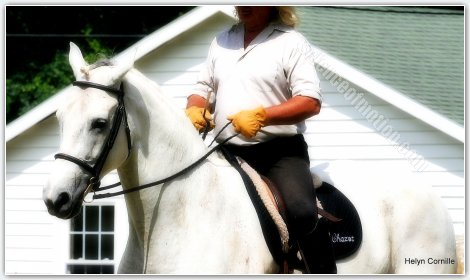 | | Lightness |
James Rooney pioneered the idea that the kinematics abnormality was there first and that it was the repetition of the kinematics abnormality that caused the lesion. . "The gait abnormality created by a specific lesion is the gait abnormality that causes the lesion." Rooney's findings paved the way for the ability to correct the gait abnormality before it becomes a lesion. Instead, the veterinary medicine elected to wait for the lesion focusing on greater diagnostic tools. During a recent conference a statement was made, "If the therapy does not work, it is because the diagnosis is not precise enough." The financial purpose of the statement is easy to understand as the author is involved in creating better diagnosis tool. There is no doubt that greater diagnostic tools could eventually prevent the lesion. For instance, before becoming apparent in the cartilage, arthritis commences with micro fracture or other lesion in the subchondral bone. However we are far from routine MRI as a preventing tool for early detection of arthritis. Genetics is field of research that promise prevention but meanwhile, horses move crooked and gait abnormalities create lesions. The kinematics abnormality causing the lesion can be corrected. "The horse's athletic ability is the result of good genetics and training interaction." (Eric Barrey, 2002) Whatever progresses are made in diagnosis or in genetics, the quality of the training remains the difference between lameness and soundness. Rooney's legacy is that instead of being the cause of lameness as it is usually the case, the training can become the source of soundness.
|
|
The Science of Motion Work in Hand
|
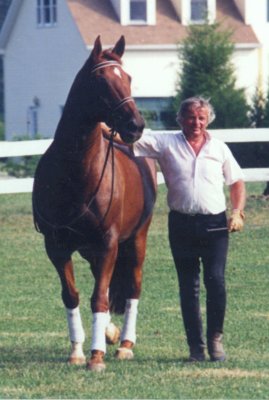 | | Lafeyette & JLC |
Many imitate our approach holding the reins with two hands and touching the horse legs or body with a whip. Doing so, they miss the science behind the experience. The technique of holding the reins with two hands and touching the legs with a whip only allow talented but dysfunctional horses to perform movement for which their physique is not athletically prepared. The techniques were acceptable as long as the equine education was limited to the appearances. Most dressage manuals describe the training of passage and piaff, but very few explain how the horses perform them." (Mikael Holmstr�m, 1994)
Advanced research studies explain how the horse perform gaits and athletic achievements and the practical application of advanced research studies is precisely about preparing the horse's physique for the move. The extension to therapy is the practical application of Rooney's principle, "A major cause of lameness is lameness." The gait abnormality is there first and it is the repetition of this gait abnormality that causes pathological changes and therefore injury. In hands techniques that teach the movements without the capacity to precisely develop and coordinate the horse physique for the athletic demand of the performances are not therapeutic at all.
|
|
Articles by Jean Luc Cornille
|
We are wishing you very Happy Holidays. 
Warmly,
Jean Luc, Helyn, Chazot, Cesar, Manchester, Bretelle and Charlie. Science Of Motion LLC
|
|
|
|
Copyright �Science Of Motion LLC 2014
All Rights Reserved.
|
|
|
 |
 |
|
|